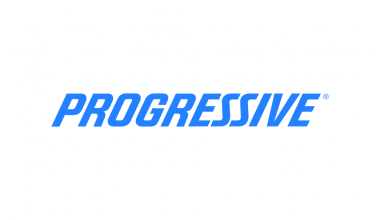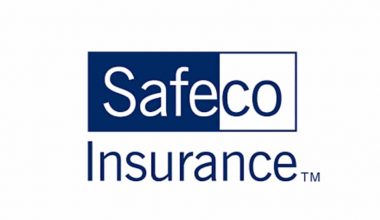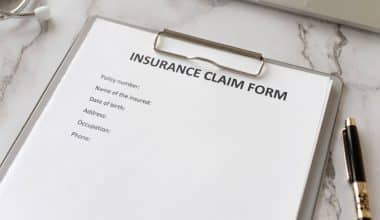Does Geico offer gap insurance? Well, this is one of the important questions you have to consider when selecting an insurance provider for your gap insurance. This is because not all insurance companies offer gap insurance, as its value depends on your situation.
What is gap insurance?
Gap insurance is a type of auto insurance that you can purchase to protect yourself in case you total your car and the amount of compensation you receive does not fully cover the amount you owe on your financing or lease agreement. It reimburses a car owner when the payment for a total loss is less than the outstanding loan or lease balance.
Gap insurance covers the difference between the depreciated value of the car and the loan amount owed if the car is involved in an accident.
If your car is totaled, your car insurance company will reimburse you based on the current value of the car after this depreciation—not the price you paid for it, the cost of a new one, or the amount you still owe on your loan or lease agreement. That’s where gap insurance comes in.
Imagine you’ve purchased a car for $30,000 and financed it with a loan. A year later, the car is in an accident, and your insurance company determines its current market value to be $22,000 due to depreciation. However, you still owe $28,000 on your loan. In this scenario, gap insurance would cover the $6,000 difference between your remaining loan balance and the insurance payout.
This ensures you’re not left with the financial burden of paying off a loan for a car you no longer have.
Below is an example of gap insurance:
You purchased a new car with a sticker price of $28,000 with 10% down, bringing your loan cost to $25,200. With a five-year auto loan and a 0% new-car financing deal, your monthly payment is $420. After 12 months, you’ve paid $5,040. You still owe $20,160.
At one year, the car is totaled in an accident, and the insurance company calculates the current value of the vehicle. Like the average car, your car is now worth 20% less than you paid a year ago. That’s $22,400. Your coverage will reimburse you enough to cover the outstanding balance on your car loan and leave you $2,240 to put down on a replacement vehicle.
But what if your car was one of the models that don’t hold their value as well? If your car depreciated by 30% since you purchased it, your insurance check will be $19,600. You owe your lender $560, and gap insurance is needed.
| Without gap coverage | |
|---|---|
| Total Loan Amount Owed | $20,160 |
| Collision Insurance Payout | $19,600 |
| Shortfall | $-560 |
| (Gap Payout) | (0) |
| Your Out-of-Pocket Cost | $560 |
| With gap coverage | |
|---|---|
| Total Loan Amount Owed | $20,160 |
| Collision Insurance Payout | $19,600 |
| Shortfall | $-560 |
| Gap Payout | $560 |
| Your Out-of-Pocket Cost | $0 |
When to consider gap insurance
- You traded in an upside-down car. When trading in an upside-down car, the dealership will add what you still owe to the loan balance of the new car unless you pay that difference upfront. This extra balance could come back to haunt you if your car is totaled or stolen.
- You financed a car and made little or no down payment. Without making a significant down payment, you’ll be upside down in your auto loan the moment you drive off the lot. It may be several years before the loan amount and the car’s actual cash value begin to balance.
- You took out a long-term car loan (more than 60 months). A long-term loan takes longer than usual to hit the break-even point, which is when your loan balance and the car’s value begin to equalize.
- You plan to put miles on quickly. Very few things reduce a car’s value faster than lots of driving. The faster you rack up the miles, the faster you depreciate your car’s value, and you’ll likely be dropping the value of your car more quickly than your payments can keep pace.
What does gap insurance cover?
Gap insurance covers the difference between what you owe on a car lease or loan and the amount paid out in a total loss settlement from an auto insurer, minus your deductible. There is only a “gap” to cover if you owe more on your car than it’s worth.
Below are some of the situations that gap insurance covers:
- Deductible. No. Gap insurance purchased through a car insurance company usually doesn’t cover your collision or comprehensive deductible amount. This means if you have a $3,000 gap after your collision insurance pays out and have a $500 collision deductible, gap insurance will pay $2,500. The $500 remaining is the deductible amount.
Some gap insurance policies offered at dealerships will pay your primary insurance policy’s deductible. But be aware that gap insurance purchased from a dealer is typically much more expensive than buying gap coverage from a car insurance company.
- Transmission failure. No. Gap insurance doesn’t cover transmission failure or any other mechanical repairs.
- Engine failure. No. Gap insurance doesn’t cover engine failure. It only pays out after a total loss of your vehicle, such as an auto accident or theft of your car. Mechanical issues on their own are not covered by car insurance or gap insurance.
- Theft. Yes, gap insurance will pay if your car is stolen.
- Death. No. Gap insurance coverage strictly pays out based on the total loss of your vehicle and doesn’t cover injuries, death or funeral costs.
The liability portion of a car insurance policy covers accidental death to others. If you have personal injury protection or medical payments coverage it can cover funeral fees for you and your passengers.
Cost of gap insurance
Gap insurance costs an average of $61 a year, according to Forbes Advisor’s analysis.
Gap insurance is much cheaper through a car insurance company compared to a car dealership. Buying gap insurance from a car dealership might seem convenient, but it can often end up costing you more in the long run. Car dealerships typically charge up to $600 for gap insurance that can be added to your loan, according to Trusted Choice, a group of independent insurance agents.
The cost of gap insurance could be rolled into your car loan, but that means you’ll also be paying interest on it. You’ll also lose the flexibility to cancel the gap insurance since it’s tied to your loan, so you might end up paying for something that’s no longer useful.
Cost of gap insurance by company
| Company | Average annual cost of gap insurance |
|---|---|
| Travelers | $34 |
| Progressive | $38 |
| Auto-Owners Insurance | $48 |
| American Family | $51 |
| State Auto | $52 |
| Erie | $58 |
| Shelter | $141 |
| Westfield | $70 |
| Average | $61 |
Does Geico offer gap insurance?
No, GEICO does not offer gap insurance.
GEICO is renowned for its affordable coverage, but it doesn’t offer gap insurance to its customers. To protect your leased or owned vehicle, you’ll need to source gap insurance from a dealership, standalone company, lender, or new provider. With a standard car insurance policy from GEICO, you’ll get access to certain benefits — but you won’t be able to purchase gap insurance.
Since GEICO doesn’t offer gap insurance or new car replacement insurance, you’ll have to rely on alternative coverage, like collision or comprehensive insurance, if your vehicle is totaled or stolen.
Collision and comprehensive insurance—or full-coverage insurance—through GEICO will reimburse the actual cash value of your vehicle if it’s considered a total loss. Depending on your policy, you might have to subtract your deductible and additional fees. The same coverage will kick in if your car is stolen.
What’s missing, then? Full-coverage insurance won’t cover the remaining loan balance on your recent purchase if your vehicle is totaled or stolen. In most cases, that amount is typically more than the actual value of your vehicle at the time of the incident, and you’ll need to pay off the remaining loan balance.
You’ll run into issues if you only have liability insurance since it only covers other drivers’ expenses—not yours.
What to do if you have GEICO and need gap insurance
Although gap insurance is typically an optional type of coverage, it might be a requirement if you’re leasing a car. If that’s your situation, don’t worry—you still have options if you have GEICO insurance and find out you need gap coverage.
From dealerships to credit unions, there are other sources you can lean on for gap insurance when you take out an auto loan. You can even purchase it through a bank if that’s most convenient. If you’re purchasing gap insurance through your lender, you can branch out to another insurance provider while maintaining your GEICO coverage.
That said, your best bet is to compare car insurance quotes from companies that offer gap insurance to your current premium. To name a few, Progressive, Allstate, and Nationwide have gap insurance available to customers. If their rates look a little more wallet-friendly, you might want to jump ship to one of these providers altogether.
Do I need gap insurance?
You may consider gap insurance to supplement your collision insurance for the time when you owe more for that car than its actual cash value.
You may have heard the term “upside down” about a home mortgage debt. The concept is the same whether the item financed is a house or a car. It may currently be worth less than the loan balance.
This isn’t as dire as it sounds. If you put only a little money down on a purchase and pay the rest in small monthly installments spread over five years or more, you don’t immediately own much of that house or car free and clear. As you pay the principal, your ownership share expands, and your debt shrinks.
You may need gap insurance if you…
- Made less than a 20% down payment
- Financed for 60 months or longer
- Leased the vehicle (carrying gap insurance is generally required for a lease)
- Purchased a vehicle that depreciates faster than the average
- Rolled over negative equity from an old car loan into a new loan
In these instances, gap insurance could protect you against potentially negative financial consequences if the vehicle is declared a total loss.
Alternatively, you may be able to skip gap insurance if…
If you’re still paying off your car, you need collision coverage. You’re probably required to have collision coverage by the terms of your loan or lease agreement.
- You made a down payment of at least 20% on the car when you bought it, so there’s little chance that you will be upside down on your loan, even in the first year or so that you own it.
- You’re paying off the car loan in less than five years.
- The vehicle is a make and model that historically holds its value better than average.
It’s worth checking the National Automobile Dealers Association (NADA) guide or Kelley Blue Book periodically to see how much your car is worth. Compare it to your loan balance. If your loan balance is less than the car’s value, you no longer have a gap to worry about.
Alternatives to gap insurance
Some car insurance companies offer other types of coverage that sound similar to gap insurance. Here are two alternatives to gap insurance that might interest you.
Better car replacement coverage
Some car insurance companies, such as Horace Mann and Liberty Mutual, offer “better car replacement” coverage. This reimburses you for a newer or better model of your totaled car. This coverage may also have mileage parameters. For example, Liberty Mutual will reimburse you for a vehicle that’s one model year newer and with 15,000 fewer miles than the vehicle that was totaled.
The optional coverage is only for policyholders who own their cars. It’s not available for leased cars.
New car replacement coverage
New car replacement coverage reimburses you enough to replace your totaled or stolen vehicle with a new car.
That’s different from the actual cash value, which factors in depreciation. Your vehicle must meet age and mileage requirements to take advantage of new car replacement coverage.
There’s generally a deductible attached to new car replacement coverage.
Here are examples of companies that offer this coverage:
- Nationwide: Nationwide provides new car replacements for a vehicle less than three years old.
- Amica: Amica’s new car replacement coverage is part of its Platinum Choice Auto package. The new car replacement coverage for Amica replaces a totaled vehicle with a new car if it’s under a year old and has fewer than 15,000 miles on it.
- Farmers: Farmers offer new car replacement coverage for a vehicle of the same make and model if your car gets totaled within the first two model years and 24,000 miles.
New car replacement coverage varies significantly by company, so make sure to read the fine print and understand exactly what you’re getting if you want new car replacement protection.
Recommended Articles
- Accidental Death Insurance: Meaning, Coverage & Benefits
- WHERE TO BUY GAP INSURANCE: Your Ultimate Guide
- Branch Insurance: Auto and Home Insurance Review 2023
- AMICA AUTO INSURANCE REVIEW 2023
- How Much Dwelling Insurance Coverage Do I Need?
- Contents Insurance: What Is It & What Does It Cover?






